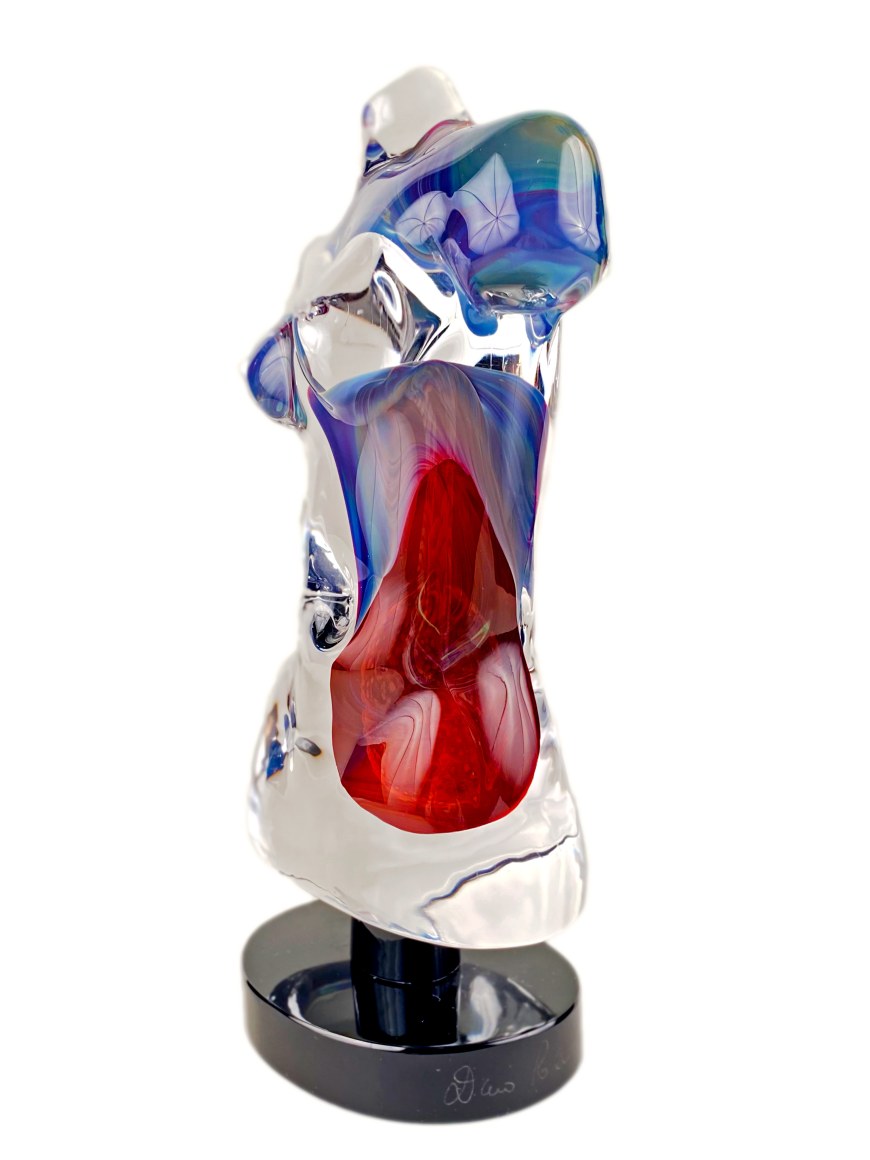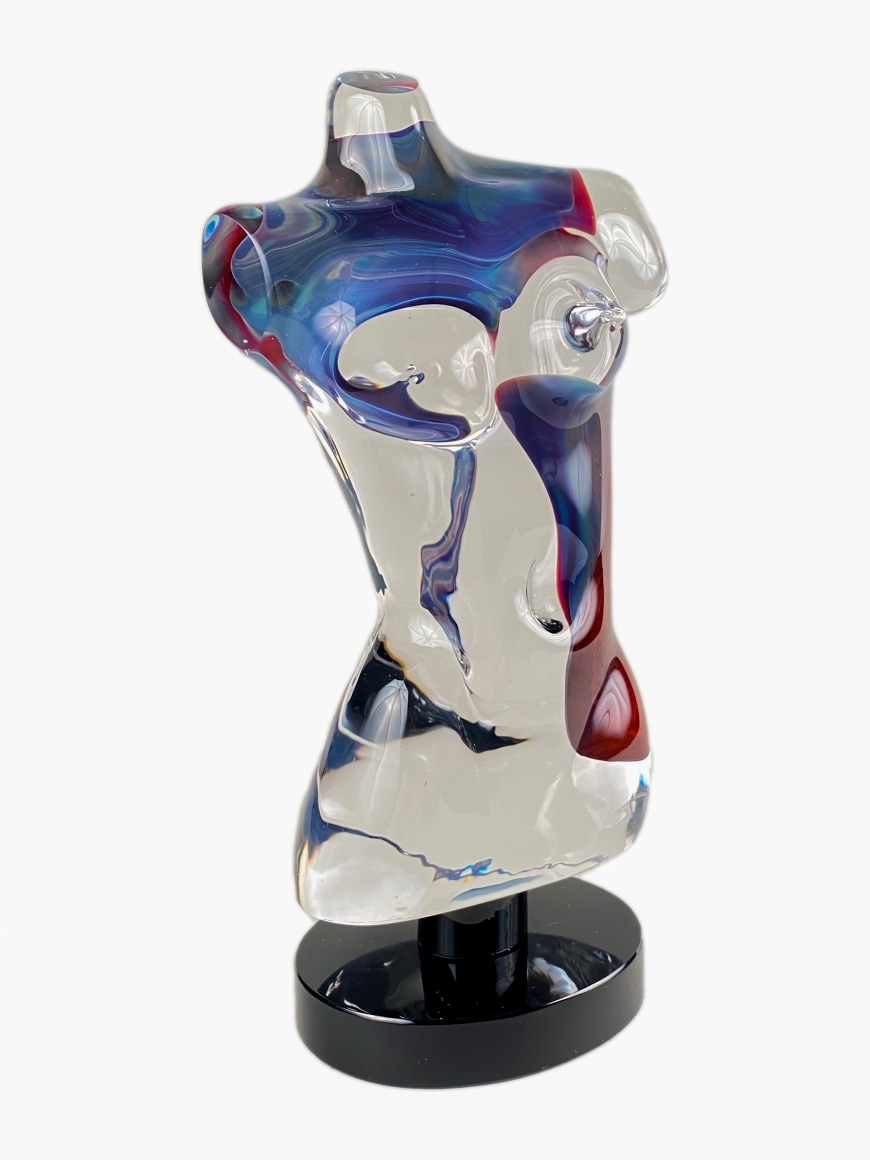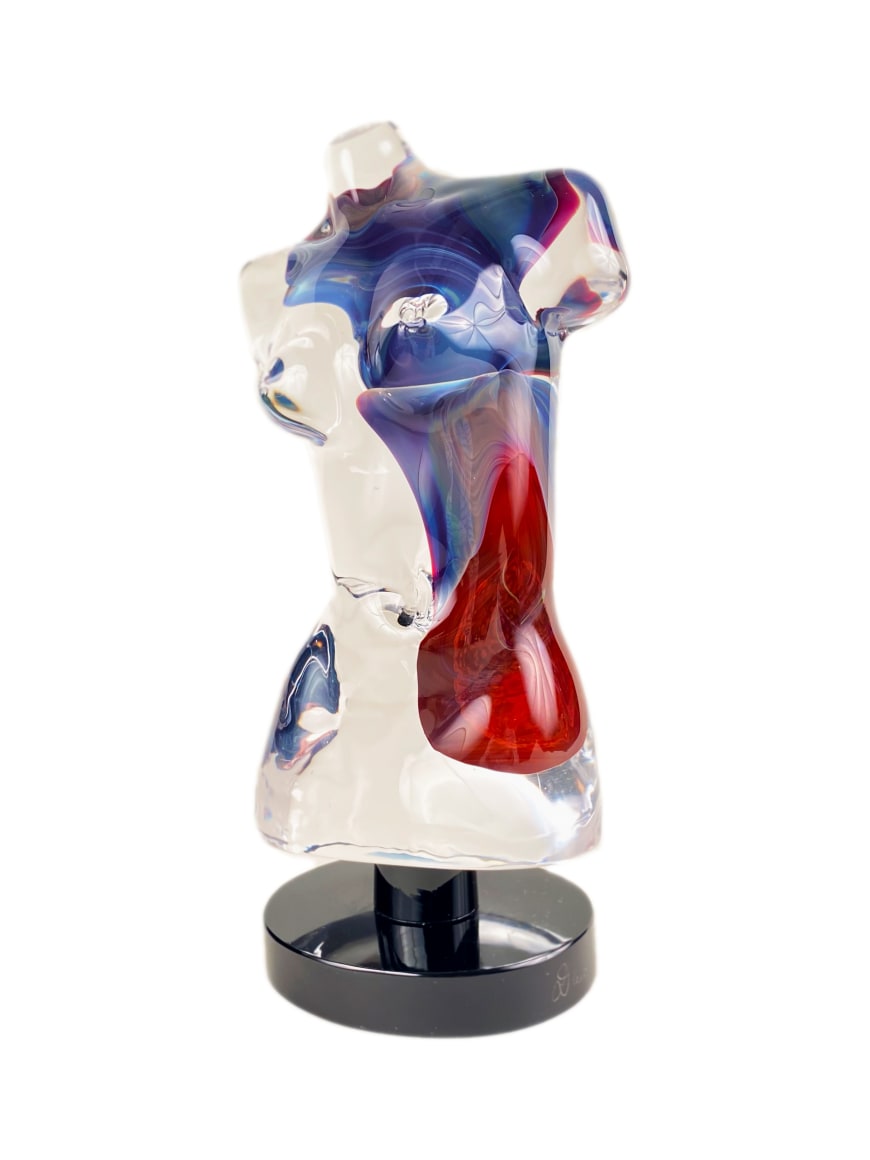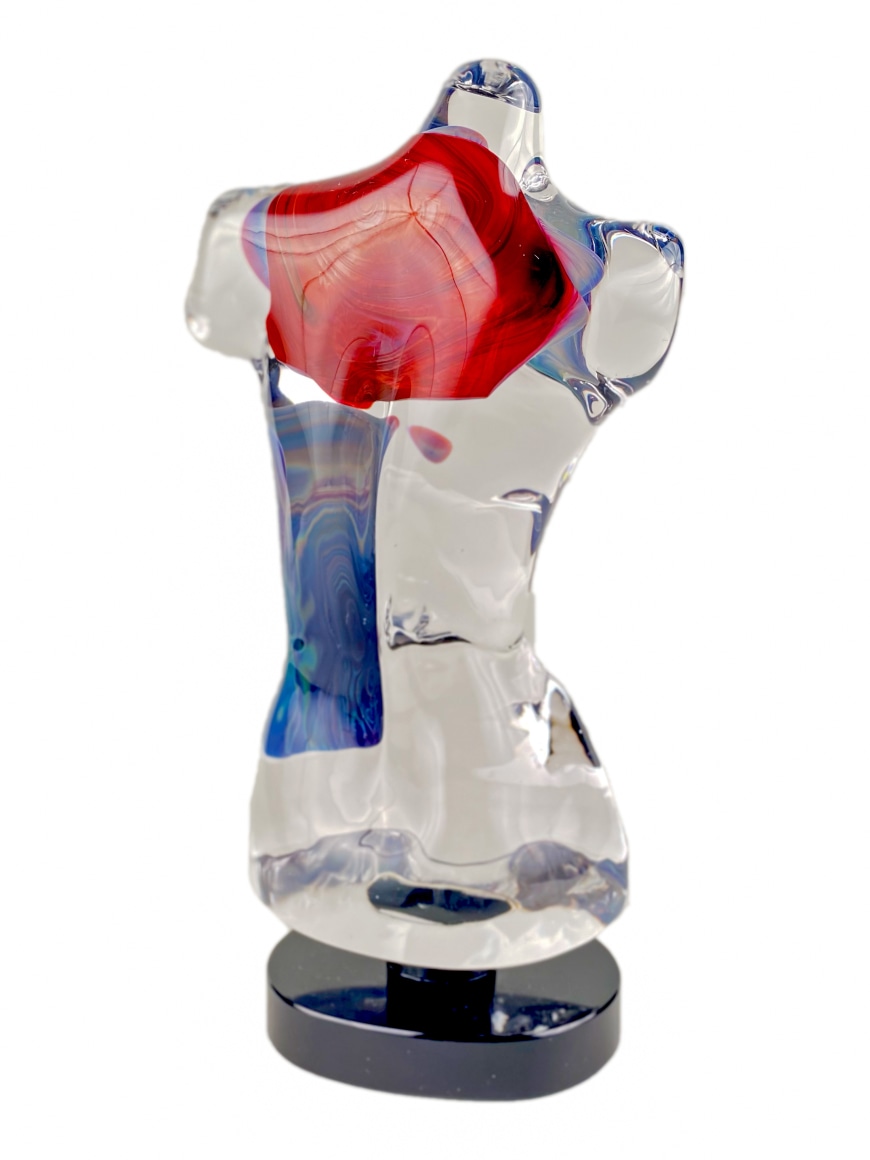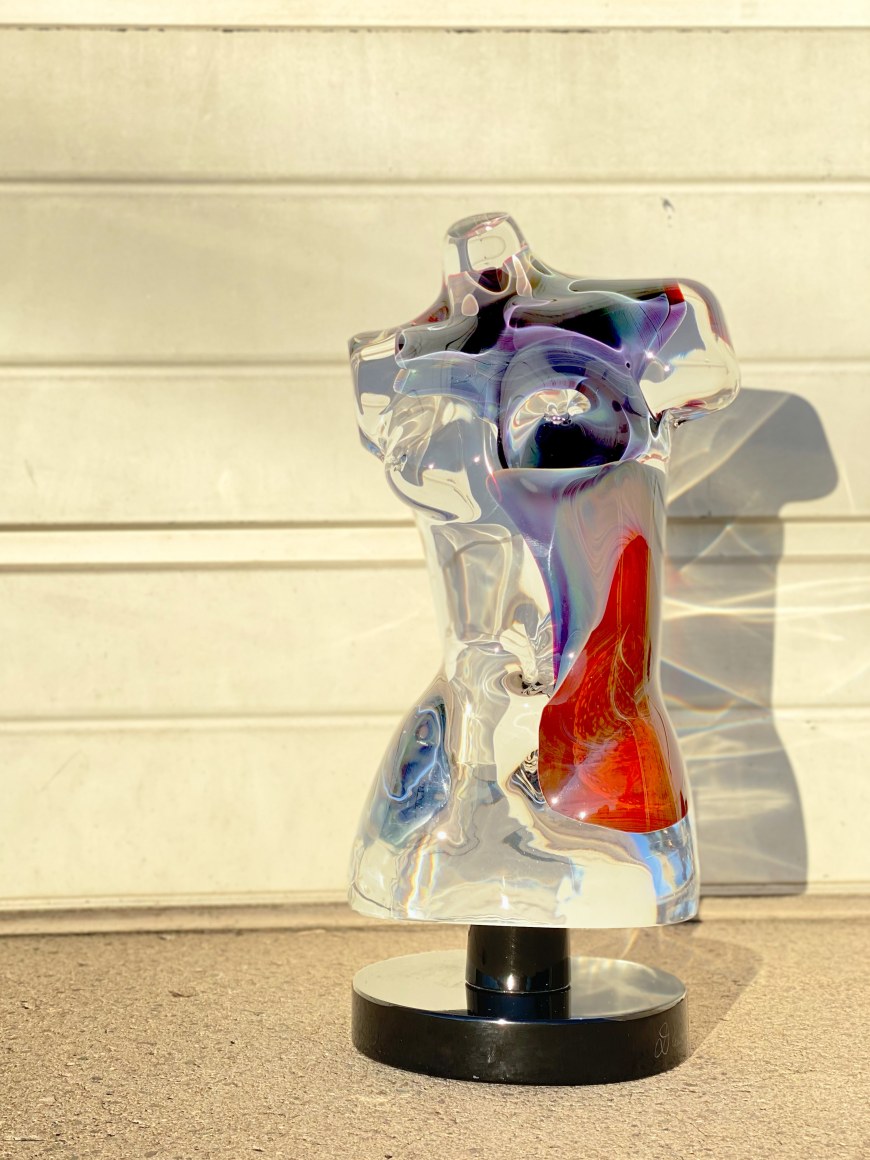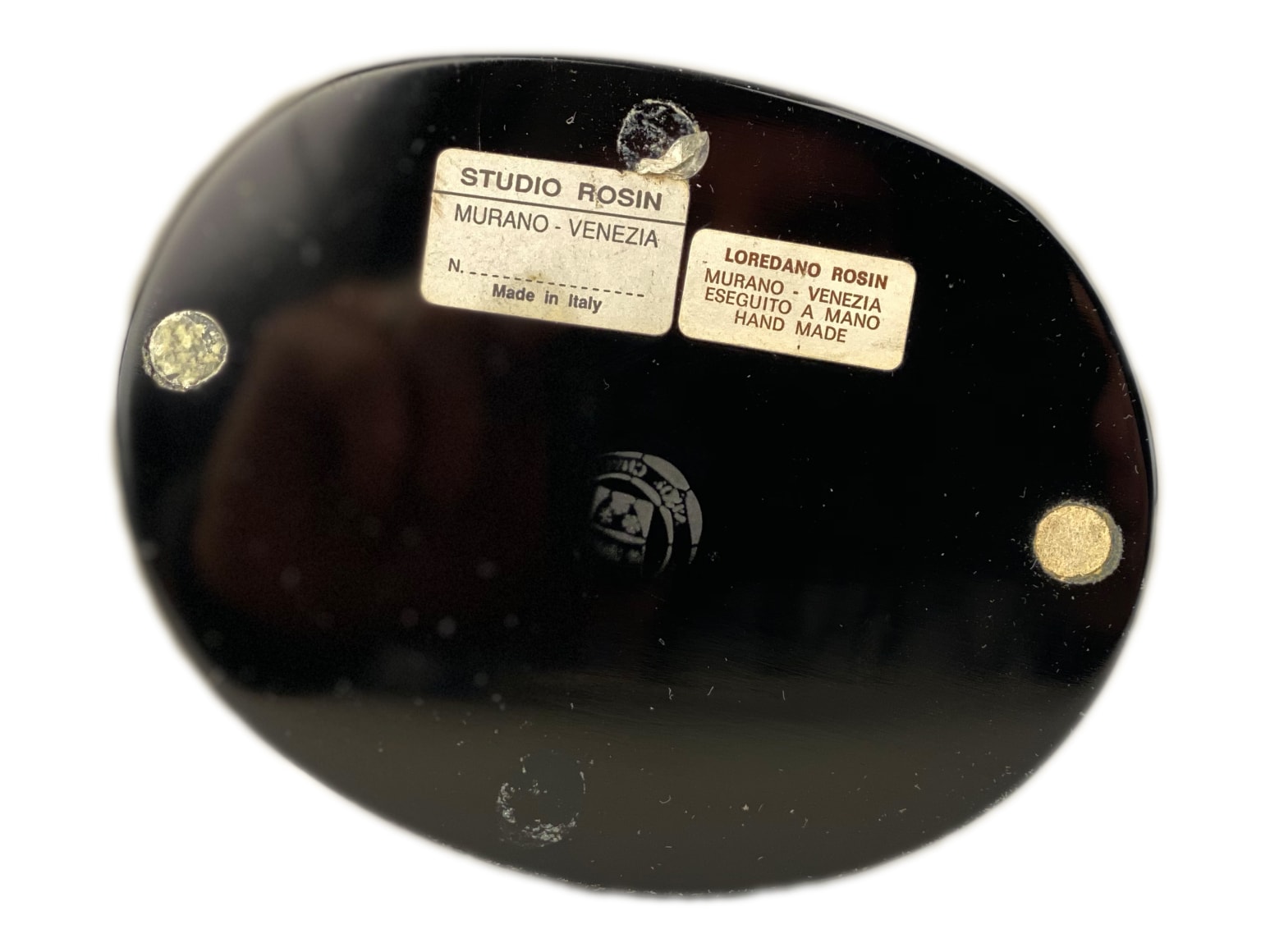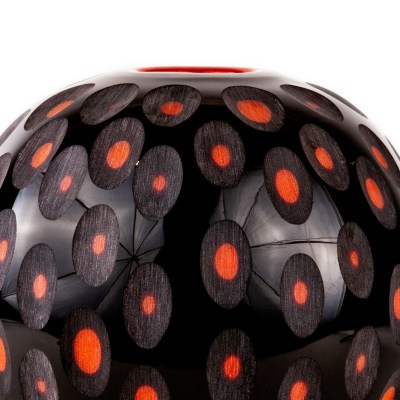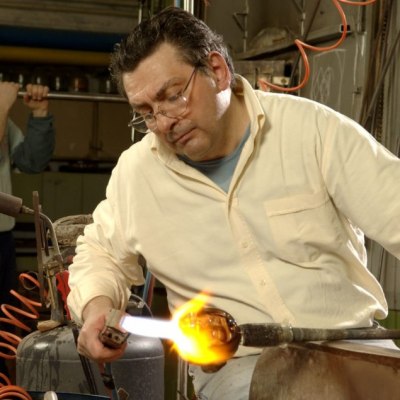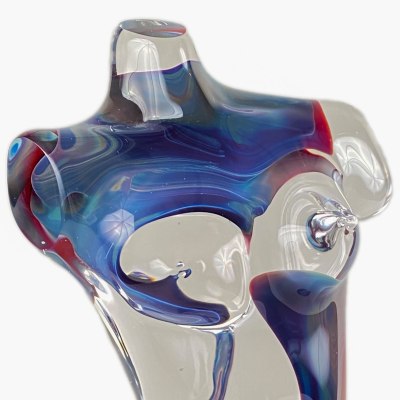
A Fantastic and very sensual Italian Modern hand blown "Aphrodite" art glass sculpture by legendary glass maestro Dino Rosin decorated with swirling multicolor accents known as "chalecedony" or calcedonian glass decoration cased in clear heavy glass applied to a black glass pedestal. The glass is is highly reactive toward light. Depending on the light weather artificial or natural the color will react with different intensity. The torso is signed on the base "Dino Rosin": and further retains its origginal paper labels and partial etched signature.
Notes:
Chalcedony ("Calcedonia" ) glass enjoyed great popularity among the wealthy within and outside Venetian Republic in the fifteenth and sixteenth century due to its exotic chromatic effects and the look that imitated expensive semi-precious stones. It was used to create cups, pitchers, goblets, bowls and various other tableware, as well as decorative pieces for the noble homes, such as vases and sculptures. Later during seventeenth and eighteenth centuries Murano masters started adding molten Avventurina glass to chalcedony vitreous paste, in order to add sparkly accents to the look.
As with so many Murano Glass techniques, the recipe for making chalcedony glass was lost at the end of the eighteenth century. Luckily, in the middle of the nineteenth century a glass master on Murano named Lorenzo Radi rediscovered the secret of making the chalcedony glass paste that was used to achieve the looks very similar to the ones created in the sixteenth century. A precursor to the chalcedony glass revival of the twentieth and twenty-first centuries, Radi's style focused on simple linear forms, letting the beautiful chromatic combinations and veined designs take the center stage.
Contemporary Murano glass artists took interest in the potential of chalcedony glass and Radi's designs, and have been creating contemporary art glass pieces in chalcedony techniques, which one may see in various galleries and private residences. This makes chalcedony one of the oldest decorative glass-making techniques that are still in use today.

